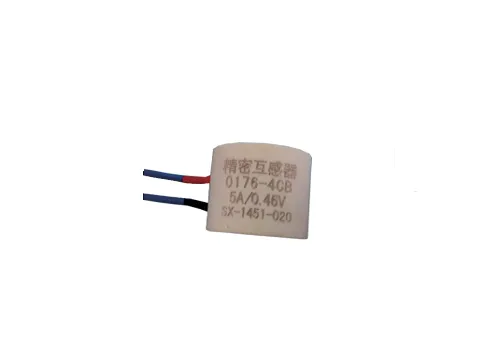Understanding the Role of Common Mode Choke Cores in Advanced Chemical Applications
In the realm of advanced chemical applications, particularly when dealing with nanotechnology and new chemical materials, understanding the components that contribute to effective electromagnetic interference (EMI) management is crucial. One such component is the Common Mode Choke Core. This device plays a significant role in filtering unwanted noise and ensuring the stability of electronic circui
In the realm of advanced chemical applications, particularly when dealing with nanotechnology and new chemical materials, understanding the components that contribute to effective electromagnetic interference (EMI) management is crucial. One such component is the Common Mode Choke Core. This device plays a significant role in filtering unwanted noise and ensuring the stability of electronic circuits, which is vital in the chemical industry where precision is key.
A Common Mode Choke Core essentially consists of two or more windings wrapped around a magnetic core. When current flows through these windings, it creates a magnetic field that opposes common mode noise—interference that appears simultaneously on both wires of a circuit. This interference can degrade the performance of sensitive electronic equipment, which is often employed in advanced chemical processes. By effectively blocking this noise while allowing differential signals to pass through, Common Mode Choke Cores help maintain the integrity of data transmission and improve overall circuit performance.
The application of Common Mode Choke Cores extends beyond mere noise reduction. In the field of nanotechnology, where the manipulation of materials at the molecular or atomic level can significantly impact properties and behaviors, maintaining a stable environment is paramount. These choke cores can help ensure that the equipment used in such delicate processes operates within optimal conditions, minimizing the risk of disruption caused by electromagnetic interference.
Moreover, the materials used in constructing Common Mode Choke Cores are often critical to their performance. In the chemical industry, especially with the advent of nano-engineered materials, selecting the right core material contributes not only to the electrical characteristics of the choke but also impacts its thermal stability and durability. As industries increasingly adopt novel materials for their superior properties, understanding how these interact with electromagnetic components becomes essential.
In summary, the significance of Common Mode Choke Cores in advanced chemical applications is multifaceted. They not only serve as essential components for EMI management but also play a crucial role in optimizing the performance of electronic equipment used in the processing and development of new chemical materials. Understanding their functionality and the materials that comprise them can lead to more efficient operations in the nanotechnology sector, ultimately enhancing product quality and process stability. As the industry evolves, staying informed about components like Common Mode Choke Cores will be paramount for professionals seeking to leverage technology for improved outcomes in chemical innovations.
A Common Mode Choke Core essentially consists of two or more windings wrapped around a magnetic core. When current flows through these windings, it creates a magnetic field that opposes common mode noise—interference that appears simultaneously on both wires of a circuit. This interference can degrade the performance of sensitive electronic equipment, which is often employed in advanced chemical processes. By effectively blocking this noise while allowing differential signals to pass through, Common Mode Choke Cores help maintain the integrity of data transmission and improve overall circuit performance.
The application of Common Mode Choke Cores extends beyond mere noise reduction. In the field of nanotechnology, where the manipulation of materials at the molecular or atomic level can significantly impact properties and behaviors, maintaining a stable environment is paramount. These choke cores can help ensure that the equipment used in such delicate processes operates within optimal conditions, minimizing the risk of disruption caused by electromagnetic interference.
Moreover, the materials used in constructing Common Mode Choke Cores are often critical to their performance. In the chemical industry, especially with the advent of nano-engineered materials, selecting the right core material contributes not only to the electrical characteristics of the choke but also impacts its thermal stability and durability. As industries increasingly adopt novel materials for their superior properties, understanding how these interact with electromagnetic components becomes essential.
In summary, the significance of Common Mode Choke Cores in advanced chemical applications is multifaceted. They not only serve as essential components for EMI management but also play a crucial role in optimizing the performance of electronic equipment used in the processing and development of new chemical materials. Understanding their functionality and the materials that comprise them can lead to more efficient operations in the nanotechnology sector, ultimately enhancing product quality and process stability. As the industry evolves, staying informed about components like Common Mode Choke Cores will be paramount for professionals seeking to leverage technology for improved outcomes in chemical innovations.








